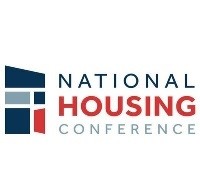Research grants to help control asthma and reduce tobacco smoke exposure
WASHINGTON, D.C. – September 30, 2015 – (RealEstateRama) — The U.S. Department of Housing and Urban Development (HUD) today awarded more than $2 million in research grants designed to protect children and other vulnerable groups from health hazards in their homes. This funding highlights the link between housing and health, and methods for reducing residential health hazards. HUD’s grants are being awarded to two universities and a non-profit research institution studying new low-cost methods to control asthma triggers in the home, and to control tobacco smoke residue that has settled on home surfaces (referred to as third-hand smoke. Read below a complete project-by-project summary of the programs awarded grants today.
The following is a state-by-state breakdown of the funding announced today:
|
Grant Recipient |
State |
Award |
| San Diego State University Foundation / Dept. of Psychology |
CA |
$699,866 |
| Sinai Health System / Sinai Urban Health Institute |
IL |
$677,658 |
| Columbia University / Mailman School of Public Health |
NY |
$672,158 |
HUD’s Healthy Homes Technical Studies (HHTS) Grant Program supports research on new approaches to improve the efficacy and cost-effectiveness of methods to evaluate and control of housing-related health and safety hazards. The program is particularly focused on the health of children and other vulnerable groups. The grants announced today as part of HUD’s overall Healthy Homes Program supplement the $101 million in grants HUD awarded in August to protect thousands of children from lead and other home health hazards.
As HUD marks its 50th anniversary, HUD Secretary Julián Castro is focused on advancing policies that create opportunities for all Americans, including helping children and families secure quality housing and protecting them from home health and safety hazards.
“Finding new and improved ways to keep asthma and secondhand smoke under control so that children excel is vital to a family’s well-being,” said Secretary Castro. “The research that will be conducted under these grants will show how low-cost methods can be used to make and keep their homes healthy.”
“Asthma and other respiratory diseases continue to afflict too many children and other vulnerable individuals,” said Matthew Ammon, Director of HUD’s Office of Lead Hazard Control and Healthy Homes. “These grants will support important research that will improve our ability to better manage these illneses through cost effective home interventions.
HUD’s Healthy Homes Program promotes safe, decent, and sanitary housing as a means for preventing disease and injury. There is an emerging body of scientific evidence—to which these new grants will contribute—linking health outcomes such as asthma, lead poisoning, and unintentional injuries to substandard housing. Housing of all types and ages may contain hazards. Creating healthier housing promotes the health of people of all ages, but especially our most vulnerable, and thus has the potential to save billions annually in health care costs. Everyone needs a healthy home and some of the most serious health problems are linked to our homes. There are special reasons to focus on the home environment:
- On average we spend about 70 percent of our time in our homes.
- Children’s play and interactions can expose them to toxins such as insect residues and tobacco smoke that have settled on surfaces in the home.
- Millions of U.S. homes have existing hazards such as deteriorated lead-based paint, elevated radon levels, or pest infestation.
Read more about how to protect your family from a variety of home-based health and safety hazards inHelp Yourself to a Healthy Home.
###
Abstracts – 2015 Healthy Homes Technical Studies Grant
Illinois
Sinai Health System will be awarded $677,658 to evaluate the sustained effect of a community health worker-guided healthy homes asthma intervention for adults over a 24-month post-enrollment period. Sinai will randomize 135 participants into either a low-intensity intervention or a no-additional-intervention control group at the completion of the 12-month intervention phase. The participants will then be followed for 12 months. In addition, Sinai will assess the costs and benefits of implementing the low-intensity maintenance phase following the initial intervention. This study will evaluate progress towards the objectives of: 1) improving asthma control; 2) decreasing urgent health resource utilization; and, 3) improving asthma-related Quality of Life.
Contact Person/Authorizing Official: Mr. Claude H. Hall, Jr., System Director, Grants & Strategy, 773-257-2749, ">
New York
The Trustees of Columbia University in the City of New York (with partners the Little Sisters of Assumption Family Health Service and The New York Academy of Medicine) will be awarded $672,158 to conduct an intervention study to evaluate low cost methods for preventing and controlling mold and excess moisture in the homes of New York City children with asthma. The study will focus on the East Harlem neighborhood, a low-income, primarily Latino neighborhood with high asthma prevalence. Methods will be employed to identify and quantify mold in homes before and after remediation, providing the evidence for intervention effectiveness in the short term (1 year) and long term (2-5 years). Researchers will also examine the associations between presence of mold and health status, health care use, and quality of life among the children with asthma.
Contact Person/Authorizing Official: Ms. Alicia Bergdolt-Batista Senior Project Officer, (212)305-2127,">
California
San Diego State University Foundation (with partners the Environmental Health Coalition and the City of San Diego Lead Safety and Healthy Homes Program) will be awarded $699,867 to study the distribution of third-hand (THS) smoke residue in 200 low income homes. THS residue refers to nicotine and other toxic chemicals such as lead and tobacco-specific carcinogens, which settle on surfaces within a home, making them available for exposure to residents by contact or release into the air. The study will also examine factors that affect THS levels in the tested homes (e.g., type of housing, the presence or absence of a smoke-free housing policy, etc.), and will also assess the efficacy of three different approaches to cleaning the THS residue. THS residue samples will be collected immediately after cleaning and again in three months to assess the persistence of residue removal.
Contact Person/Authorizing Official: Mr. Rick Gulizia, Director of Research Affairs, (619)594-5938,">














